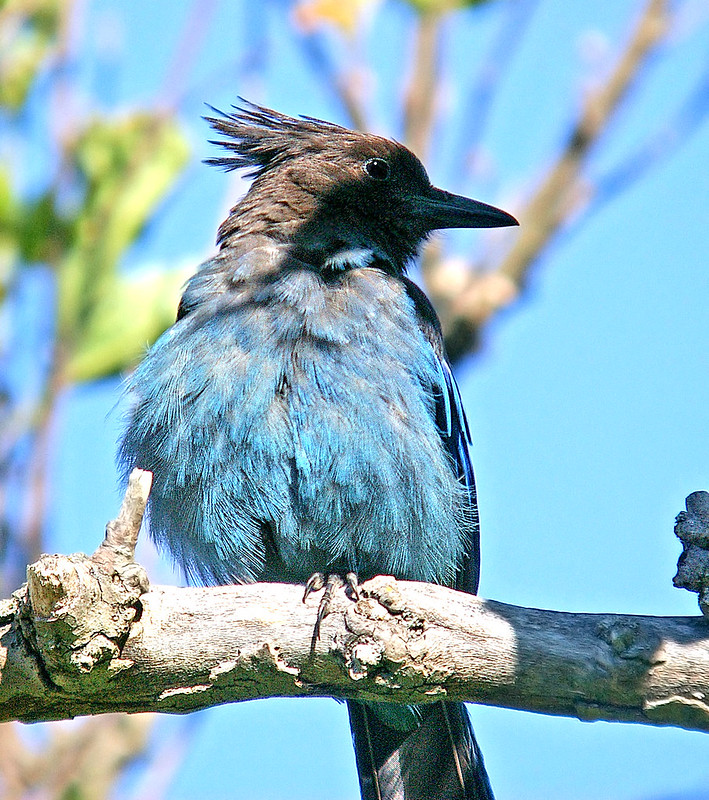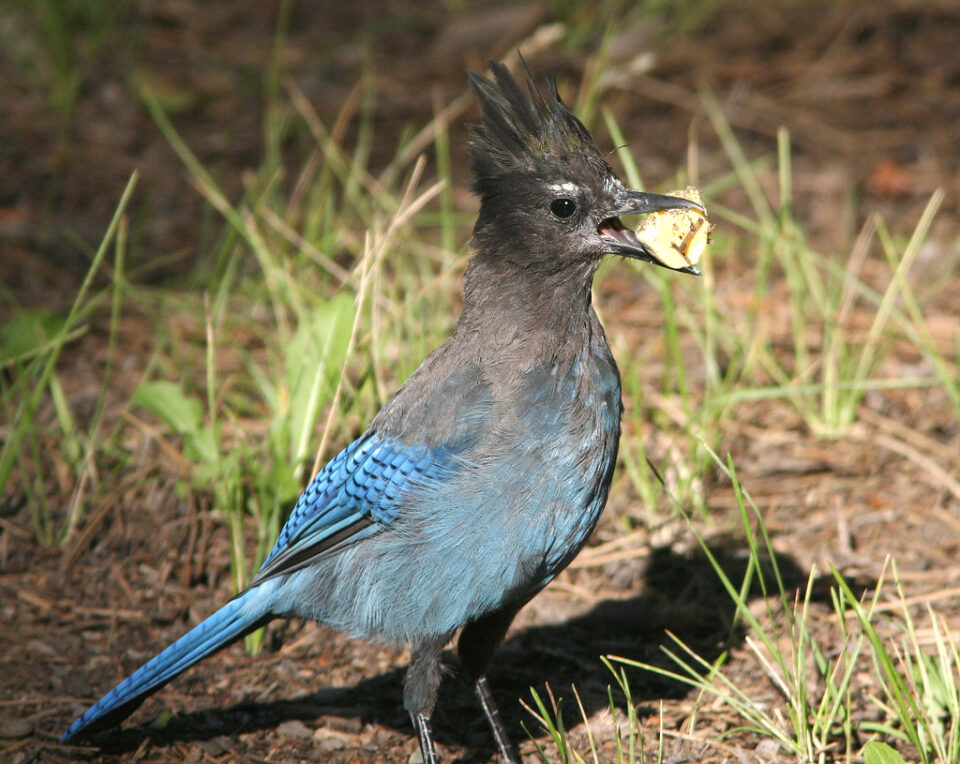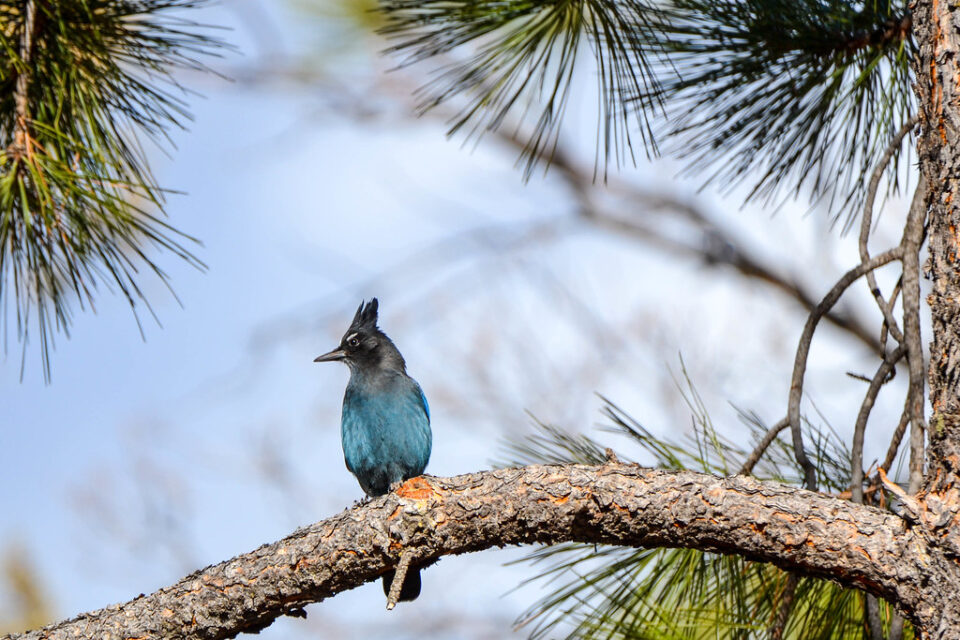
“638 – STELLER’S JAY (7-13-06) slo co, ca (2)” by Sloalan is marked with CC0 1.0.
As I was walking near Redfish Lake a few years ago, I was approached by a bird I had never seen before. The bird landed on a log next to me, and hopped towards me, looking at me inquisitively. We watched each other for some time, and I felt as though there was some kind of symbolic meaning in the interaction. Following the encounter, I discovered that this visitor was, in fact, a Steller’s Jay.
With a flash of blue, and an incessant call, this bird demands your attention. Relatively common, this unique looking bird thrives in mountainous forests. Whether you were at a campsite, or hitting the trail, if you’ve spent time in the SNRA, you’ve most likely come across a Steller’s Jay.
Cyanocitta stelleri, commonly known as the Steller’s Jay, is a close relative to the Blue Jay of the east. Characterized by its bright blue body and contrasting black, crested head, this bird is a “stellar” sight. First recorded in 1741 by Russian naturalist Georg Steller, this bird was first observed in Alaska, though its home range is wide across the Rocky Mountains. It was known as the only crested jay west of the Rockies, though the Blue Jay has infiltrated some of this range.

“638 – STELLER’S JAY (7-29-08) nm” by Sloalan is marked with CC0 1.0.
Steller’s Jays form life-long breeding pairs, sticking together throughout all seasons. Pairs work together to build a nest of mud, leaves, twigs and moss for their offspring. This jay (as well as the Blue Jay) are the only “New World” jays to utilize mud in construction. Typically, pairs produce between four and five eggs. The male feeds the female who incubates the eggs until they hatch, when both parents feed the young birds. After fledging, adult birds will feed their young for up to a month.
These birds are considered consummate omnivores. Besides consuming seeds, nuts, berries and other vegetation, Steller’s Jay are notorious nest robbers, targeting nestlings and eggs from other bird species.These jays have even been seen attacking smaller bird species, such as pygmy nuthatches. They are also known to take advantage of human food sources, stealing from campsites, picnics and garbage cans. This behavior has earned them the nickname of “camper’s companion” among some birders.

“Durango – Steller’s Jay” by LilTexican is marked with Public Domain Mark 1.0.
Besides their unique nesting and feeding habits, this bird is also known for its vocalizations. The Steller’s Jay call has been described as “scolding” and “loud”, like a “shook shook shook” sound. This jay is also capable of mimicking other animals, birds and even human machinery. These animals are very bold in their behavior, frequently approaching humans with curiosity, possibly looking for a snack.
After my interaction with the bold Steller’s Jay, I discovered that the bird symbolizes hope and adaptability. Perhaps this is due to its boldness, or maybe how it continues to adapt to increasing human presence. Though a common bird, the Steller’s Jay is a colorful spectacle in the SNRA. Keep an eye (and an ear) out as you explore the landscape and camp in the area, you might just be approached by one of these bright birds.
Bailey Cole is a 2025 Naturalist for SIHA. When she’s not working at the Redfish Visitor’s Center, she enjoys long hikes to alpine lakes and exploring hot springs in the Sawtooth National Recreation Area.